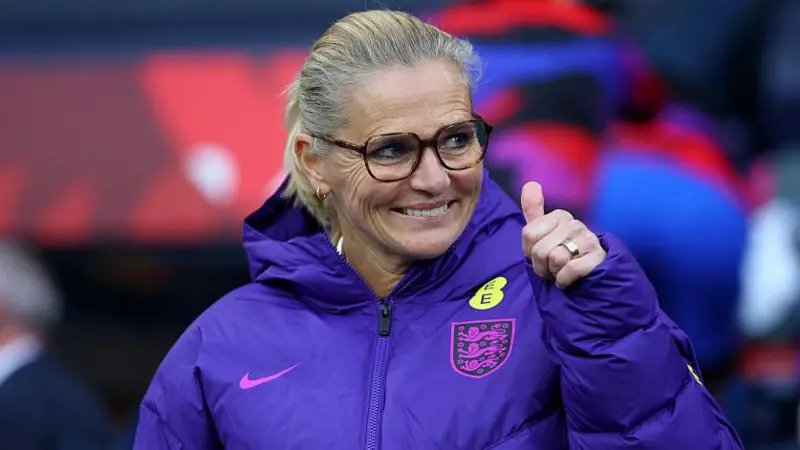England will renew their rivalry with Spain after being drawn alongside the world champions in the qualifying group for the 2027 Women’s World Cup in Brazil.
The Lionesses, managed by Sarina Wiegman, will compete in Group A3 with Spain, Iceland and Ukraine. The draw, announced on Monday, has immediately set up one of the standout fixtures of the campaign as England and Spain prepare for another chapter in their growing rivalry.
The two sides last met in the Euro 2025 final in Switzerland, when England triumphed 2-1 to retain their European title — a result that avenged their heartbreaking defeat in the 2023 World Cup final. Both nations are expected to dominate their group, though Iceland and Ukraine could prove stubborn opponents.
Wiegman, who has led England since 2021, welcomed the challenge. “Spain are world champions for a reason,” she said. “They play fantastic football and push us to our limits. But we’ve shown we can match and beat them. The goal now is consistency through qualifying.”
The qualifying format mirrors the UEFA Nations League structure, dividing teams into three leagues based on ranking. Only the four League A group winners will qualify automatically for the finals, while others will need to navigate the play-offs to reach Brazil.
England, therefore, will need to top their group to avoid a potentially tricky route through the play-off system. UEFA has been allocated 11 direct qualification spots for the 32-team tournament, with one additional European nation possibly advancing via FIFA’s intercontinental play-offs.
Home-and-Away Tests Await
The qualifiers will unfold over six matchdays in 2026, starting on 3 March and concluding on 9 June. Each side will play their group opponents home and away.
If England finish second or third in Group A3, they will enter the play-offs, initially facing a League C team before meeting a stronger opponent from either League A or B in the next round. The bottom four teams in League A will also enter a relegation play-off round, with their World Cup hopes at stake.
Elsewhere, the Republic of Ireland were handed a daunting draw in Group A2 alongside the Netherlands, France and Poland. Scotland will meet Belgium, Israel and Luxembourg in Group B4, while Wales face the Czech Republic, Albania and Montenegro in Group B1. Northern Ireland were drawn in Group B2 with Switzerland, Turkey and Malta.
Tough Road for Home Nations
While England remain favourites to progress, the other home nations face far tougher paths. Teams in League B must finish in the top three to have any chance of reaching the play-offs. Finishing bottom would mean relegation to League C and automatic elimination from World Cup contention.
Should Wales, Scotland or Northern Ireland top their respective groups, they would be promoted to League A and face a second or third-placed League B side in their opening play-off. Finishing second or third, however, would mean meeting a fourth-placed League A team or a League B winner.
The play-off rounds are seeded, meaning any of the home nations progressing beyond the first stage would likely have to face a strong League A opponent to reach Brazil.
Despite the complex format, excitement is already building for another cycle of high-stakes European competition. England’s meeting with Spain, in particular, promises to be one of the highlights of the qualifying campaign — a battle between two modern powerhouses that have reshaped the women’s game.
For Wiegman’s side, the objective is clear: avoid the uncertainty of the play-offs, finish top of Group A3, and book a direct ticket to Brazil. But with Spain standing in their way, the journey to the 2027 World Cup looks set to be anything but straightforward.



